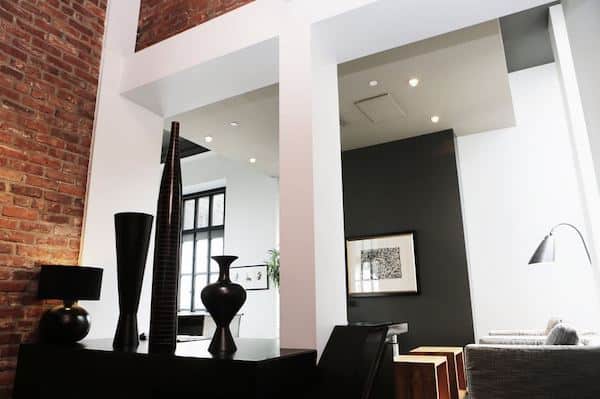A few weeks ago we commented the importance of lighting in our homes, providing a small basic guide on the types of lighting and how to use them depending on our purposes. Knowing this classification, today we want to go one step further, providing some tips when buying a lamp.
It is obvious that the lamp, in areas such as a living room or a bedroom, play an essential aesthetic role, so we must always take care that its style is in line with the rest of the decoration of the room. Thus, it does not seem advisable to hang a crystal chandelier in a room full of rustic furniture. Actually, it is pure logic of interior design.
In the same way and considering that one of the great focal points of attention in the rooms is found in its lamps, size does matter. In this sense, it is always preferable to sin using a small lamp than an excessively large one, since if so, it could be aggressively invasive.

Functionality according the room
Beyond aesthetic considerations, we cannot lose sight of the fact that functionality is paramount. And this functionality not only goes hand in hand with the lighting it provides, but also with other factors that, depending on the type of room, may vary.
Children’s rooms serve as a perfect example to illustrate what we mean. Safety must prevail in such areas, and this inevitably leads us to flee from anything that may entail danger, such as lamps that overheat or have little stability and may fall.
On the contrary, a living room will give us much more range, as we saw in previous articles, in which we even talked about the ideal proportion of playing with up to five lighting points and using the general, ambient or focal lighting.
Quantity of light
Reached this point, we address one of the most complex issues and on which most errors are made: to know how to select correctly the quantity of light we need. The most common mistake is to associate the power of the lamp with the quantity of light that it will provide. This circumstance does not always occur, up to the point that we can find lamps with less watts that illuminate better than others with higher power.
The key is in the lumens (lm), which is the unit by which the quantity of light emitted by the luminaires is measured. Pay attention on it, especially now that LED lamps have been extended so much, is basic. In the establishments where the lamps are purchased, we will surely find the best advice, given that depending on the surface of the room we want to cover and the type of lighting we seek, there are preset values that serve us as a guide.
Thus, for the general lighting of a room of about 20 square meters, we will need between 3,000 and 4,000 lm. The room that we are going to illuminate is a variable that determines the intensity and at equality of surface, will vary the amount of lumens. Let’s take as an example a dining room and a kitchen that, in both cases, have 10 square meters of surface. While in the dining room the reference values move in the range of 1,500-2,000 lm, for the kitchen we have to expand it to 3,600-4,000 lm, logically, due to the need to require more lighting for food handling and cooking process.
Range of possibilities
Once these factors are known, it is time to choose types of lamps and, in this sense, the range of possibilities is very wide, which is why we can find our best ally in an interior designer, in order to do not make a mistake when we chose it.
We can find from the most conventional pendant lamps, which for a long time were the queens of general decorative lighting, located in the center of the room, up to ceiling and wall lamps, which are ideal for creating ambient lighting.
In addition to table lamps, we cannot forget to those that have gained a lot of ground in recent years thanks to their daring designs: floor lamps. These types of luminaires have managed to steal the prominence of yesteryear from pendant lamps, contributing to the general decoration, even when they are switched off.







Leave A Comment